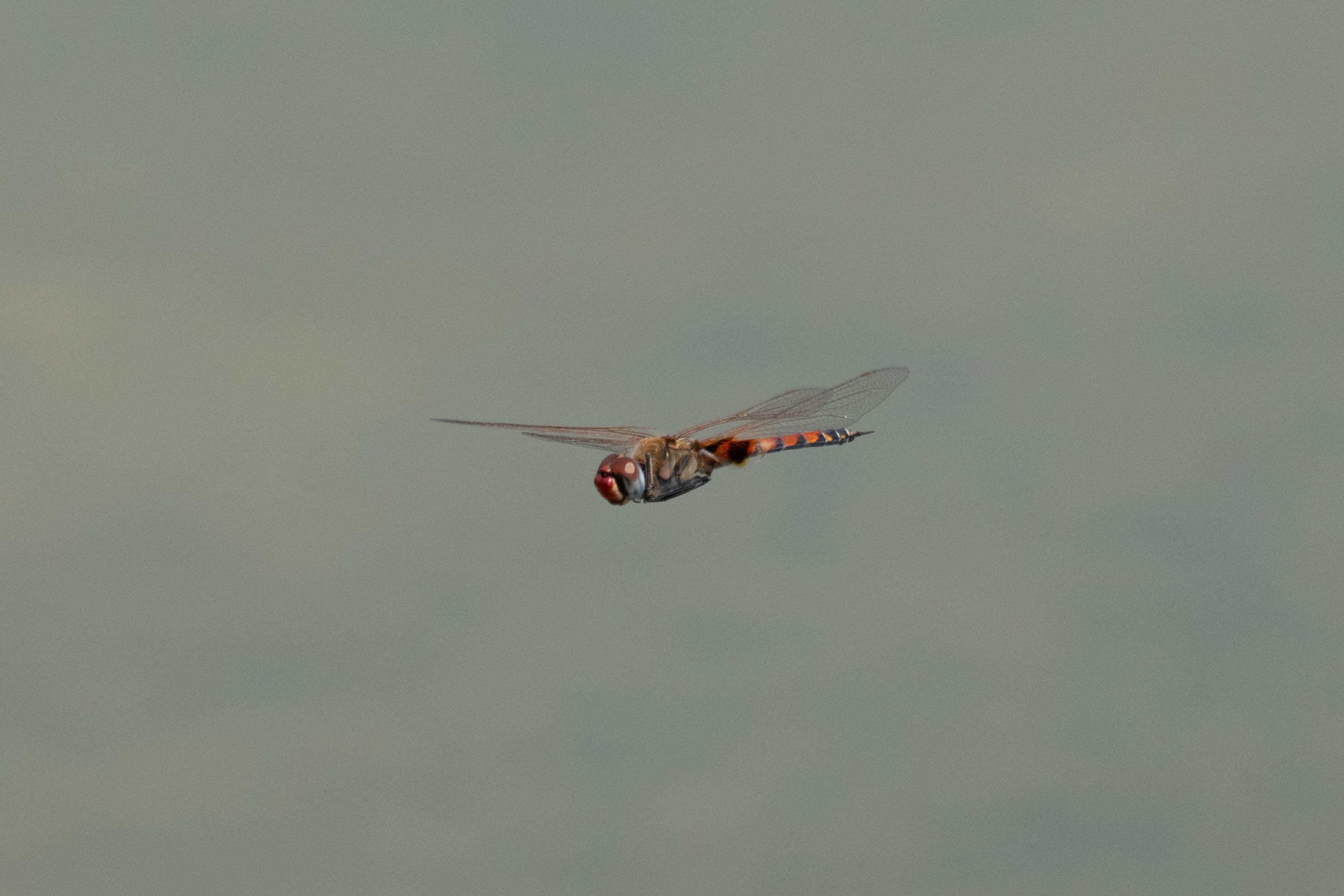Hong Kong's first Tramea basilaris burmeisteri Kirby, 1889 recorded by AFCD staff
2024-06-13
A dragonfly species new to Hong Kong, Tramea basilaris burmeisteri (Libellulidae), has recently been recorded by AFCD staff in North New Territories. On 9 May 2024, AFCD field staff observed a male T. b. burmeisteri flying above a pond during a monitoring survey in Long Valley. Tramea basilaris burmeisteri is a medium-sized (total length of male: 49-50 mm) dragonfly inhabiting grassy ponds. The species is characterised by the overall red body – yellowish red face, orange-brown synthorax, reddish brown markings at the base of hyaline hind wings, as well as the red abdomen with black markings on S3-10. The species is distinctive because most other members of the same genus including the nominate subspecies T. b. basilaris lack the prominent dark markings on the abdomen except S8-10. Compared to the widespread Tramea virginia, the reddish brown markings on the hind wings of T. b. burmeisteri are smaller, tinted with pale brown and partly transparent in the centre. Females resemble males with a more yellowish brown body.
Tramea basilaris (Palisot de Beauvois, 1817) has a widespread distribution across the whole of Sub-Saharan Africa, extending eastward to Arabia and the Oriental region, and with westward records also reaching a few Caribbean and South American countries (Clausnitzer et al. 2016). The nominate subspecies T. b. basilaris is commonly recorded in Africa and neighbouring regions, while records of T. b. burmeisteri are mostly found from India to Indo-China regions and extend to Japan (Clausnitzer et al. 2016; Zhang 2019). In China, T. b. burmeisteri is currently known only from Yunnan and Guangxi (H. M. Zhang pers. comm.).
Like many other Tramea species, T. basilaris is a strong migrant (May 2013; Viganò et al. 2017). Although the species prefers open grassy ponds with scattered trees, it can also be found in other standing or temporary freshwater habitats such as marshes, lakes and water tanks, especially during its long migration and nomadic flight. The dragonfly is often seen in tireless gliding flight, but it can occasionally be found resting on exposed twigs. Given that this record of T. b. burmeisteri is the first in Hong Kong (and even Guangdong), and that the species has a strong migratory behaviour, the species is considered a vagrant and its status in Hong Kong awaits further observation.
Acknowledgement: We would like to thank Mr LEUNG Man-hin for providing the record and photograph of Tramea basilaris burmeisteri; Dr ZHANG Hao-miao for his provision of information on the distribution of T. b. burmeisteri in China.
References
Clausnitzer, V., Suhling, F., Dijkstra, K.-D.B., Dow, R.A., Boudot, J.-P., Schneider, W. and Samraoui, B. (2016). Tramea basilaris. The IUCN Red List of Threatened Species 2016: e.T60049A83871612. https://dx.doi.org/10.2305/IUCN.UK.2016-3.RLTS.T60049A83871612.en. Downloaded on 21 May 2024.
May, M.L. (2013). A critical overview of progress in studies of migration of dragonflies (Odonata: Anisoptera), with emphasis on North America. Journal of Insect Conservation 17: 1-15.
Viganò, M., Janni, O. and Corso, A. (2017). Tramea basilaris on Linosa Island, Italy: A new species for Europe and the Western Palaearctic (Odonata: Libellulidae). Odonatologica 46: 55-66. https://doi.org/10.5281/zenodo.572356
Zhang, H.M. (2019). Dragonflies and Damselflies of China. Chongqing: Chongqing University Press.